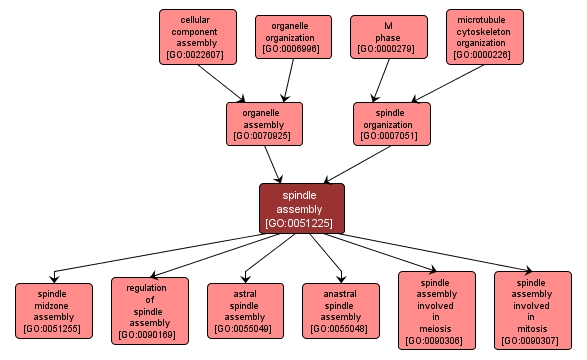GO TERM SUMMARY
|
| Name: |
spindle assembly |
| Acc: |
GO:0051225 |
| Aspect: |
Biological Process |
| Desc: |
The aggregation, arrangement and bonding together of a set of components to form the spindle, the array of microtubules and associated molecules that serves to move duplicated chromosomes apart. |
Synonyms:
- spindle formation
- bipolar spindle formation
- spindle biosynthesis
- bipolar spindle biosynthesis
- GO:0051226
- GO:0051227
|
|

|
INTERACTIVE GO GRAPH
|














